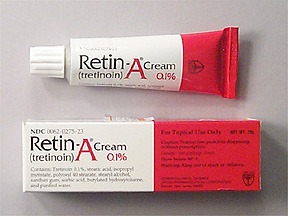The Benefits of Prescription Strength Tretinoin 0.1% for Your Skin Compared to Over-the-Counter Retinol
Discover the superior benefits of prescription-strength Tretinoin 0.1% for your skin compared to over-the-counter retinol. Learn how Tretinoin can enhance your skincare routine, offering more effective results for anti-aging, acne treatment, and overall skin health.
10/14/20241 min read


Understanding Tretinoin and Its Advantages
Tretinoin, a derivative of Vitamin A, is a topical medication often prescribed for skin conditions such as acne and photoaging. Available in various strengths, including the potent 0.1% formulation, it is a powerful tool in dermatology. Unlike retinol, which is readily available over-the-counter, tretinoin's prescription-only status signifies its more robust effectiveness. This post explores why using prescription strength tretinoin can yield superior results for your skin compared to milder retinol options.
The Efficacy of Tretinoin vs. Retinol
The primary distinction between tretinoin and retinol lies in their application and potency. Tretinoin is considered a prescription retinoid that works directly on the skin, providing faster and more visible results. In comparison, retinol must undergo conversion within the skin to become active, resulting in slower effects. The 0.1% concentration of tretinoin allows for a significant increase in efficacy, especially for individuals dealing with severe acne scars, deep wrinkles, and sun-damaged skin.
Long-Term Benefits for Skin Health
Long-term use of prescription strength tretinoin 0.1% can significantly improve skin texture, tone, and overall appearance. Studies have shown that regular application of tretinoin can increase collagen production, which is crucial for maintaining skin elasticity as we age. Furthermore, tretinoin helps to unclog pores and reduce the formation of new acne, thus providing dual benefits of treating existing breakouts while preventing future occurrences. In contrast, retinol, though beneficial, may not deliver the same level of transformation due to its lower potency.
